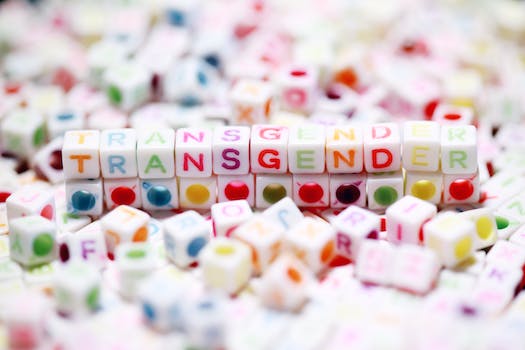-
Table of Contents

Introduction:
Gender identity is a complex and deeply personal aspect of human existence. For some individuals, their assigned gender at birth does not align with their true gender identity. This disconnect can lead to feelings of distress and discomfort, prompting them to embark on a journey of self-discovery and transition. In this article, we will explore the experiences of FTM (female-to-male) individuals, their challenges, triumphs, and the importance of support throughout their transition.
Understanding Gender Identity:
Before delving into the experiences of FTM individuals, it is crucial to understand the concept of gender identity. Gender identity refers to an individual’s deeply held sense of their own gender, which may or may not align with the sex they were assigned at birth. While sex is typically determined by physical characteristics such as reproductive organs, gender identity is a deeply personal and psychological experience.
Gender identity exists on a spectrum, with male and female being the traditional binary options. However, many individuals identify as non-binary, genderqueer, or transgender, among other identities. It is essential to respect and acknowledge the diversity of gender identities and provide support to individuals as they navigate their own unique journeys.
The FTM Experience:
FTM individuals are assigned female at birth but identify and live as males. Their journey involves a process commonly known as transitioning, which can include social, medical, and legal aspects. Let’s explore each of these aspects in more detail:
Social Transition:
Social transition refers to the process of aligning one’s gender presentation with their true gender identity. This can involve changes in clothing, hairstyle, name, and pronouns. Social transition allows FTM individuals to express their authentic selves and be recognized and addressed as the gender they identify with.
Case Study: Alex’s Social Transition
Alex, a 25-year-old FTM individual, decided to socially transition after years of struggling with his gender identity. He changed his name from Alexandra to Alex, started wearing masculine clothing, and asked his friends and family to use he/him pronouns. This social transition allowed Alex to feel more comfortable and affirmed in his identity.
Medical Transition:
Medical transition involves various procedures and treatments that help FTM individuals align their physical appearance with their gender identity. Hormone replacement therapy (HRT) is a common aspect of medical transition for many FTM individuals. Testosterone is administered to induce masculine secondary sexual characteristics such as facial hair growth and voice deepening.
Surgical interventions, such as chest reconstruction (top surgery) and genital reconstruction (bottom surgery), are also options for some FTM individuals. These surgeries can significantly alleviate gender dysphoria and enhance overall well-being.
Case Study: Ryan’s Medical Transition
Ryan, a 30-year-old FTM individual, decided to pursue hormone therapy and chest reconstruction surgery as part of his medical transition. After several months on testosterone, Ryan experienced increased body hair growth and a deepening of his voice, which helped him feel more aligned with his gender identity. Chest reconstruction surgery further enhanced his self-confidence and reduced his gender dysphoria.
Legal Transition:
Legal transition involves changing one’s legal documents, such as identification cards, passports, and birth certificates, to reflect their true gender identity. This process varies across different jurisdictions, but typically requires documentation from healthcare professionals and legal procedures.
Legal recognition of gender identity is crucial for FTM individuals as it allows them to navigate daily life without unnecessary challenges or discrimination. It ensures that their identity is respected and protected by the law.
Challenges Faced by FTM Individuals:
The journey of FTM individuals is not without its challenges. Society’s limited understanding of transgender experiences often leads to misconceptions, discrimination, and lack of support. Here are some of the common challenges faced by FTM individuals:
- Lack of Acceptance: FTM individuals often face rejection and lack of acceptance from family, friends, and society at large. This can lead to feelings of isolation and negatively impact their mental health.
- Healthcare Disparities: Transgender individuals, including FTM individuals, often face significant healthcare disparities. Limited access to transgender-affirming healthcare providers and insurance coverage for transition-related procedures can hinder their ability to receive necessary care.
- Mental Health Struggles: Gender dysphoria, the distress experienced due to the incongruence between one’s gender identity and assigned sex, can significantly impact the mental well-being of FTM individuals. Depression, anxiety, and suicidal ideation are higher among transgender individuals compared to the general population.
- Discrimination and Violence: FTM individuals are at a higher risk of experiencing discrimination, harassment, and violence due to their gender identity. Transphobia and societal prejudice contribute to these alarming statistics.
Supporting FTM Individuals:
Support from family, friends, and society plays a crucial role in the well-being and success of FTM individuals. Here are some ways we can support and uplift FTM individuals:
- Education and Awareness: Educate yourself and others about transgender experiences, including the challenges faced by FTM individuals. Promote understanding and empathy to combat misconceptions and discrimination.
- Respect Pronouns and Names: Use the correct name and pronouns when addressing FTM individuals. Respecting their chosen name and pronouns is a simple yet powerful way to affirm their gender identity.
- Advocate for Transgender Rights: Support organizations and initiatives that advocate for transgender rights and equality. By amplifying their voices, we can work towards a more inclusive society.
- Access to Healthcare: Advocate for improved access to transgender-affirming healthcare, including mental health support and transition-related procedures. Encourage insurance providers to cover these essential services.
- Create Safe Spaces: Foster inclusive environments where FTM individuals feel safe and supported. This can be achieved through workplace policies, educational institutions, and community organizations.
Q&A:
1. What does FTM stand for?
FTM stands for Female-to-Male, referring to individuals assigned female at birth who identify and live as males.
2. What is gender dysphoria?
Gender dysphoria is the distress experienced due to the incongruence between one’s gender identity and assigned sex at birth.
3. What is hormone replacement therapy (HRT)?
Hormone replacement






